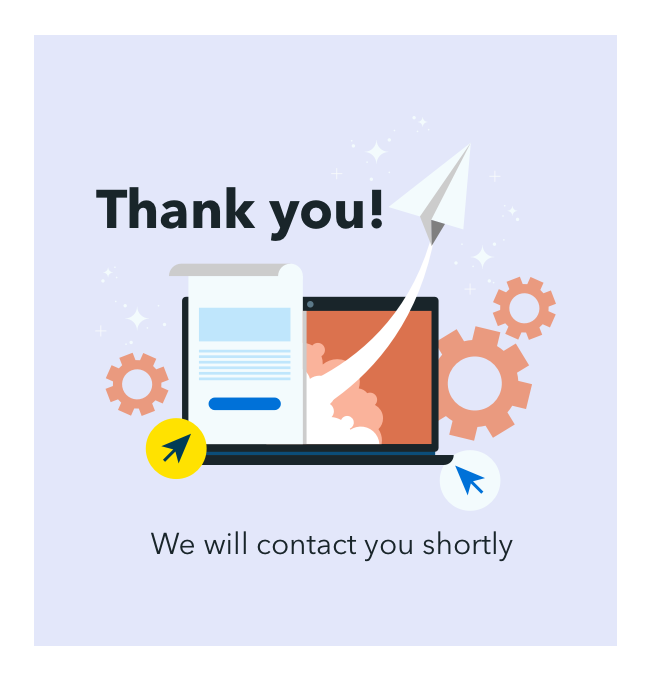
Guide to IT Staff Augmentation Pricing Models

Key takeaways:
- The main staff augmentation pricing models include Hourly, Monthly Retainer, Hourly Bucket, Fixed-Price Model, Dedicated Team Model, and Hybrid Model each tailored for projects with different scopes, requirements, duration, and talent needs.
- Staff augmentation cost is primarily affected by developer experience, tech stack, market demand, developer location, project scope, complexity, and duration.
- Staff augmentation lets you save on staffing costs, overhead, talent retention, and in-demand skills as well as lets you add the talent you need whenever you need it.
- Vendor accountability for enterprises: Mid-sized and enterprise clients aren’t just looking for outsourced talent – they want a trusted partner. nCube delivers this by offering ongoing support, ensuring team stability, and fostering long-term collaboration to align with your business objectives.
- Vendors provide risk reduction strategies: Many enterprises are cautious about staff augmentation due to concerns around talent reliability, security, and compliance. nCube addresses these concerns through thorough vetting processes, robust IP protection, and strict compliance with standards like GDPR, SOC 2, and other industry-specific regulations.
- Efficient scalability for enterprises: nCube scales teams up or down based on project needs without disrupting ongoing operations, providing the flexibility enterprises require to manage fluctuating workloads and evolving project scopes.
- Seamless team integration: Our process ensures smooth onboarding and effortless collaboration between augmented staff and your in-house teams. This guarantees that external specialists integrate seamlessly into your workflows, tools, and company culture.
IT staff augmentation has become popular among businesses looking to craft software with the best talent. Businesses that go with this approach can deliver products faster, integrate specialized skills, and reduce budgets.
In fact, a recent study highlights cost savings as one of the main reasons businesses turn to external providers. That’s why the need to supplement your existing team efficiently and affordably makes perfect sense.
In this post, we’ll walk you through the common staff augmentation pricing models, the key factors that influence costs, and smart strategies to optimize your budget. Let’s begin!
Types of IT staff augmentation pricing models

Hourly model
Sometimes you need to bring an expert for a limited time frame – whether it’s a few hours per week or several days a month. It’s particularly useful when the need for a specific skill, like database performance tuning or refining a product’s UI/UX, arises on an on-demand basis.
- You pay only for the hours an IT professional contributed to your project;
- Best suited for temporary or ad-hoc projects or those with evolving requirements;
- Offers flexibility, but costs can fluctuate based on the scope of work.
Monthly retainer model
Do you have a large project with a defined scope, deliverables, and timeline? Then, locking a dedicated software development team for a set period is a smart choice. In this case, the entire staff augmentation cost is broken down into monthly fees. This guarantees you’ll always have access to the expertise you require, for instance, mobile/web development, cloud migration, or Quality Assurance.
- You can pay a fixed monthly fee for a team of software developers;
- It benefits long-term projects requiring ongoing support;
- It enhances predictability and transparency, making budget planning much easier.
Hourly bucket model
The essence of this approach is akin to a prepaid phone plan – you buy a set number of minutes beforehand and use them as needed. In the case of this staff augmentation pricing model “minutes” stand for hours contributed by augmented staff. This practice suits businesses with a sporadic need for IT talent to work on projects without fixed timelines.
- You can get a fixed number of developer hours upfront;
- It benefits projects with a defined scope but fluctuating timelines;
- You can carry over unused hours to other projects.
Fixed price model
Unlike the pricing models we listed above, this one doesn’t focus on time spent on the project. Instead, it offers a flat cost agreed for the end-to-end completion, regardless of the hours the staff invested in the project. It’s suited for projects with a clear scope like mobile application development with well-defined features.
- You pay a predefined cost for end-to-end delivery of a project;
- Works for projects with well-defined requirements;
- Minimizes overspending risks but offers less flexibility for changing the scope.
Dedicated team model
This model focuses on a close integration of a full-time team into your workflows, which makes it a unique approach to IT staff augmentation. You get access to software developers and other IT talent who will work directly with you and seamlessly expand your internal team. Thus, a dedicated team becomes a crucial asset in your company.
The service provider charges you monthly based on team size, plus a vendor fee. This model helps you achieve cost-efficiency since the vendor covers overhead costs, payroll, bonuses, office space, and talent retention.
- A dedicated team will work for you (and only for you) full-time;
- Best suited for businesses that have a substantial amount of work;
- Offers high levels of scalability and integration with your internal staff.
Hybrid model
Lastly, the staff augmentation pricing model is a tailored combination of hourly, retainer, hourly bucket, fixed price, and dedicated team models. Its goal is to give you maximum flexibility to meet your project needs. For instance, you can build a dedicated team to support your main project while sourcing experts based on hourly or bucket models to handle ad-hoc tasks. If you’re managing multiple projects, this one is for you.
- You can make the most of the features of multiple models like fixed price for some project stages and hourly for others;
- It offers a flexible and easy-to-tailor approach for complex projects;
- You can use it when your project scope evolves over time.
Main pricing models compared
| Cost model | Pros | Cons | Best for: Type of project | Best for: Type of company |
| Hourly model | Flexibility, payment for hours invested in your project | Difficult budgeting; unpredictability | Short-term projects with ad-hoc requirements | Mid-size companies |
| Monthly retainer | Predictable costs; easier budget forecasting for finance teams | Less flexibility for changing workloads | Long-term projects with steady workloads | Enterprises |
| Hourly bucket | Better cost management due to pre-purchased hour | Risk of losing unused hours; limited flexibility | Projects with unclear timeframes but defined requirements | Mid-size companies |
| Fixed price | High levels of predictability | Requires detailed planning; limited flexibility for changes | Projects with a well-defined scope | Enterprises |
| Dedicated team | Full control over the project; scalability; full team integration | Requires first-hand management | Long-term projects with stable development needs | Enterprises & mid-size companies |
| Hybrid model | Flexibility; predictability | Can be challenging to manage; fluctuating costs | Complex or multi-phase projects | Enterprises & mid-size companies |
What factors influence staff augmentation pricing?
Developer’s skill level and experience
Staff augmentation pricing is often defined by the competence of the software developers you want to add to your team. Experienced senior-level and mid-level developers with 5+ years of experience naturally come with more competitive rates due to their advanced skills and extensive background. These professionals can add a lot of value to your project, helping you avoid common pitfalls and tackle complex challenges using problem-solving skills.
On the other hand, junior-level developers with 2 years or less in the field come with lower hourly rates, making them a cost-effective choice for routine work and projects that don’t require deep tech expertise.
At the end of the day, it’s essential to match the right level of experience to your project needs, which is a key to balancing staff augmentation costs.
Technology stack and market demand
In addition to developer experience, your tech stack can define the ultimate staff augmentation pricing. If your project requires specialized skills like Data, Blockchain, AI/ML, Cloud, Security, IoT, or Embedded, be prepared to pay higher rates compared to projects that rely on generic coding competencies.
For example, an engineer with an ML background in the USA may charge an annual salary up to $150,000, while a full-stack developer might fall into the range of $100,000 – $120,000. However, regions like Central & Eastern Europe and Latin America offer more competitive rates for these high-demand specialists.
Ultimately, specialized skills are more expensive due to the high market demand. So, to budget accurately, start by identifying the specific skills and programming languages your project requires. This will help your chosen IT staff augmentation company find talent that meets your budget.
Location of developers
Fortunately, staff augmentation is good at curbing the exorbitant cost of local developers, especially when it comes to in-demand skills. It’s because this practice lets you access talent in regions with much lower software development rates.
Let’s compare: A software developer working in Berlin, Germany may earn a salary that is 40% higher than someone working in Bucharest, Romania, which is known for its lower cost of living. This disparity is largely due to Germany’s higher cost of living compared to Romania, where living expenses and average salaries are generally lower.
Thus, the augmentation pricing is affected by the location of your external development team. In most cases, due to lower nearshore software development rates, you can save up to 40%-60% of your budget. For your convenience, we compared the hourly rates of software developers based on their location:
| Location | Junior developer | Mid-level developer | Senior developer |
| North America | $50 – $100 | $100 – $150 | $150 – $250 |
| Western Europe | $40 – $80 | $80 – $120 | $120 – $200 |
| Eastern Europe | $20 – $40 | $40 – $80 | $80 – $120 |
| Asia | $15 – $30 | $30 – $50 | $50 – $75 |
| Latin America | $20 – $40 | $40 – $70 | $40 – $70 |
| Africa | $15 – $25 | $25 – $40 | $40 – $60 |
Sources: Plane.com, Indeed, PayScale.
Project scope, complexity, and duration
The scope of your project plays a crucial role in defining the composition of your team – and eventually the augmentation cost. More complex projects typically require several roles with diverse skill sets, such as software architects, engineers, UI/UX designers, project managers, QA experts, and others. To top it off, the higher the level of expertise you require – the higher the overall cost.
When it comes to long-term projects, your staff augmentation partner can provide volume discounts or cost efficiencies to help you save in the long run.
Thus, carefully evaluate your project’s requirements, timeline, and complexity to find a balanced approach between the cost, composition, and expertise of an augmented team. A seasoned provider of IT staff augmentation services like nCube will help you align the best talent with your budget.
How does staff augmentation help businesses save costs?
1. Minimize staffing costs
Every tech leader will tell you that staffing an in-house team demands substantial budgets. No matter which one of the various pricing models you pick, be sure it will eliminate your staffing costs.
From hiring an HR team to onboarding and training – the project costs keep snowballing. A staff augmentation model is designed to trim those expenses and give you the talent ready to start software development. For you, it means losing no time in project launch and accelerating time-to-market.
2. Forget about hefty overhead expenses
In-house staffing comes with more than just a salary – you’re also bound to budget for benefits, office, IT infrastructure, insurance, professional development, and more. It can hardly be called a cost-effective solution, especially when you’re managing several projects.
With staff augmentation, you can skip these unnecessary overhead expenses. Your software development team will work from a vendor’s office, meaning there’s no need to worry about office space, hardware, or additional resources. Moreover, a trusted provider like nCube will take care of employee perks, comfort, and talent retention.
3. Hire top talent for less
If you’re located in the EU or the US, you know that the software development rates are exorbitant. Any staff augmentation pricing model gives you access to a global pool of talent, so you can reduce development costs by hiring from more cost-effective regions.
Why is it a smart solution? In countries where the cost of living is lower, salary expectations are naturally more competitive compared to your local market. By using staff augmentation nearshore you can access skilled professionals at a fraction of the cost – with quality guaranteed by a provider.
4. Pay only for what you need
Another benefit of staff augmentation services is to reduce burn rate, optimize budgets, and avoid overstaffing in uncertain economic conditions. With this model, you only pay for the skills you need, and exactly when you need them. No more worries about overstaffing during slower periods or being short of hands during crunch times.
Do you need a team for a large project? You can easily add staff only for just the duration of the project. Once it’s finalized, there’s no pressure to keep extra resources in-house. Staff augmentation lets you meet on-demand needs, without unnecessary costs.
5. Save on specialized skills
Hiring full-time specialists with niche skills requires significant investment. If your project requires in-demand skills like AI, ML, Cloud, or DevOps, and embedded systems be prepared to pay top salaries and craft long-term talent retention strategies.
However, nCube offers a smarter approach by providing access to global talent pools in these specialized fields, allowing you to tap into the expertise you need without the hefty costs of full-time hires.
Our solution is simple – explore the staff augmentation cost in the world’s most skilled tech hubs and get access to specialized skills without the costs associated with in-house hires. You can integrate a Blockchain expert for a few months or add a Cloud developer for a specific phase of your project. All without long-term commitments, which makes it simple to innovate, accelerate time-to-market, and keep costs at bay.
6. Save on talent retention
Employee turnover is a major business expense. Every time an employee leaves, the extra costs of finding and onboarding a replacement kick in. These expenses add up quickly – not to mention risks of project delays.
With providers like us, staff augmentation pricing includes the expenses to retain talent, so you can work with a stable team from start to finish. A vendor like nCube covers such services as staffing, employee development plans, insurance, payroll, HR, legal and finance support, and more. We make sure to remove our clients’ worries about employee churn.
Conclusion
So why should you include exploring benefits of staff augmentation in your agenda? Simply because this practice helps you accelerate product delivery, integrate niche skills, and reduce development costs.
Staff augmentation pricing models let you choose the best fit for your project needs. Yet, you should keep in mind that such factors as developer experience, tech stack, location, and project complexity play key roles in defining the ultimate staff augmentation cost.

Recommended articles


